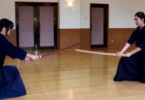This summer of 2018 when I was writing this article, everyone remember that hot, terribly hot summer like scorching us was over and the season of autumn/fall, autumn leaves (Kōyō) came to us at last.
Hi everyone how are you? Today’s topic is autumnal tints or crimson foliage that we have been waiting to visit us after burning hot summer.
Contents
Let’s go to the most recommendable spot as “Cool Japan”, Nikko to have fun of Kōyō (Autumn leaves)
Nikko, in Tochigi Prefecture, is famous for its foliage-viewing spots. Every year in November, tourists flock here from all over the country to admire the beauty of the autumn leaves.
The roads running through the mountains are jammed with traffic. But no matter how long it may take, people are determined to view the vibrant autumn colours.
In Japan, each of the four seasons is distinct. The fresh green buds of spring give way to the lush foliage of summer. And in autumn, the forests turn red and yellow.
When you look at Japan’s autumn scenery, you can’t help but notice the astonishing variety of hues. This has to do with Japan’s wide variety of vegetation.
Most parts of the country belong to the Temperate Zone, and there are large numbers of broadleaved trees. Some of them, including camphor trees and deciduous, changing colour in autumn, these include maples, whose leaves turn red, and ginkgoes, which turn yellow.
Most mountainous areas in Japan have a nice balance of evergreen and deciduous trees. It’s this that creates the beautiful, multi-coloured autumn scenery.
Since ancient times, the Japanese have deeply appreciated the beauty of autumn leaves. The autumn tints are mentioned many times in The Tale of Genji, written in the early 11th century.
Back then, when autumn rolled around, the emperors and court aristocrats would gather in gardens to admire the maple leaves.
And they would sometimes make trips into the mountains to view the leaves-a custom known as momiji-gari, literally “maple hunting”.
This is a depiction of an autumn outing during the Muromachi period, around the 16th centurey. By then momiji-gari has spread to the common people.
It’s not just the coloured leaves on the trees that the Japanese enjoy, they also find beauty in the leaves fluttering down to the ground and the carpet of fallen leaves.
Fallen leaves and the transience of life
The image of fallen leaves has been used as a motif in countless waka poems, paintings and children’s songs. For example, the monk Ryokan wrote a haiku (poem) at the end of his life, saying that・・
Both the front and back of a maple leaf
Become visible as it flutters down
And so it is when people die-
Everything is then revealed
Now the time has come for me to die
I have nothing to hide.
Seeing the fallen leaves, many Japanese are reminded of the transience of life and feel a sense of wistfulness.
That’s why they’re always found a special meaning even in the fallen leaves.
Touji-temple (東寺)lightup from Oct27(Sat)~Dec9(Sun)2018
and at from 6:30pm~9:30pm
Access: from JR Kyoto Station to Touji-temple about 15 minutes on foot
Triping there will be certainly well worth visiting to enjoy “Lightup Autumn Foliage”
At the end, “Kōyō Part 2, Upside-down Fall Foliage, Sogi Park” to be well worth a visit, thanks














